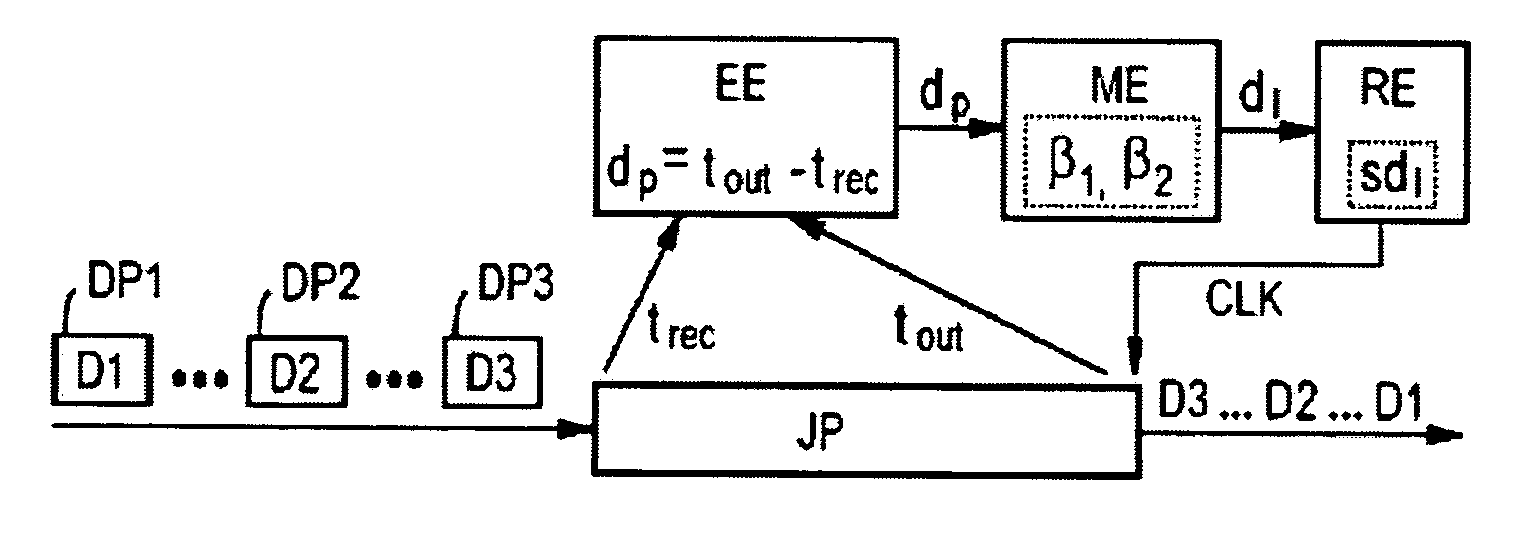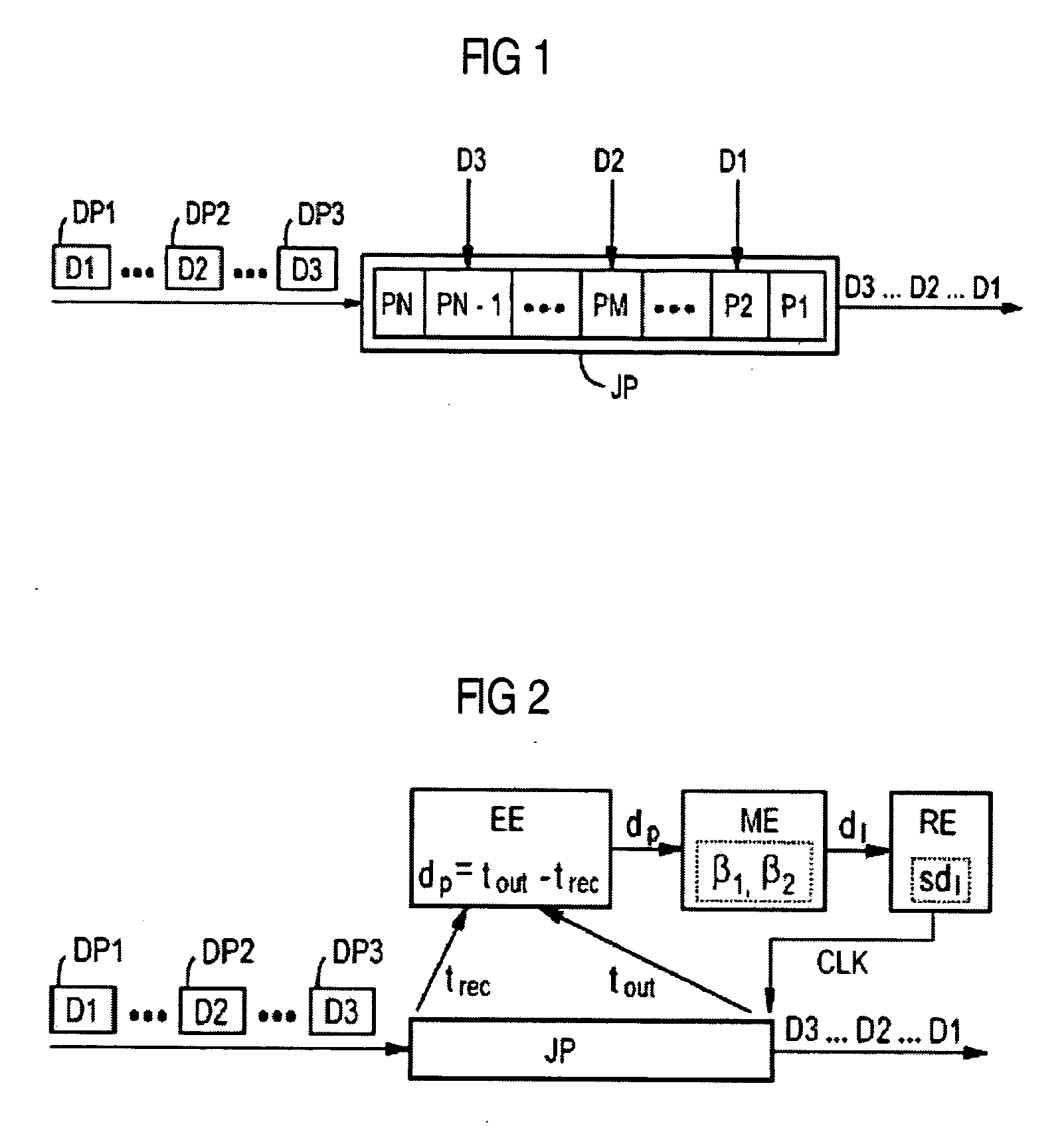Method and a jitter buffer regulating circuit for regulating a jitter buffer
a jitter buffer and regulating circuit technology, applied in the direction of multiplex communication, time-division multiplex, electrical apparatus, etc., can solve the problems of limiting the flexibility of jitter buffer regulation, regulating the desired delay, and further delay in data transmission, so as to achieve low data packet losses
- Summary
- Abstract
- Description
- Claims
- Application Information
AI Technical Summary
Benefits of technology
Problems solved by technology
Method used
Image
Examples
Embodiment Construction
[0019] FIG. 1 is a schematic of a jitter buffer JP to which data packets DP1, . . . , DP2, . . . , DP3 of a preferably internet protocol based data packet stream, for example for real-time, voice, video and / or multimedia communication, are routed for buffering. Data packets DP1, . . . , DP2, . . . , DP3 in each case contain a timestamp indicating the original time position of the relevant data packet in the data packet stream. It is assumed in the present exemplary embodiment that data packets DP1, DP2, and DP3 were generated in the sequence indicated but that, owing to variations in propagation time, arrive at the jitter buffer JP in the sequence DP3, DP2, and DP1. Having been transmitted at above-average speed, data packet DP3 has thus overtaken data packet DP2, while data packet DP1, being particularly late, has fallen behind data packet DP2.
[0020] As useful data content, data packet DP1 contains communication data D1, data packet DP2 contains communication data D2, and data pack...
PUM
 Login to View More
Login to View More Abstract
Description
Claims
Application Information
 Login to View More
Login to View More - R&D
- Intellectual Property
- Life Sciences
- Materials
- Tech Scout
- Unparalleled Data Quality
- Higher Quality Content
- 60% Fewer Hallucinations
Browse by: Latest US Patents, China's latest patents, Technical Efficacy Thesaurus, Application Domain, Technology Topic, Popular Technical Reports.
© 2025 PatSnap. All rights reserved.Legal|Privacy policy|Modern Slavery Act Transparency Statement|Sitemap|About US| Contact US: help@patsnap.com


